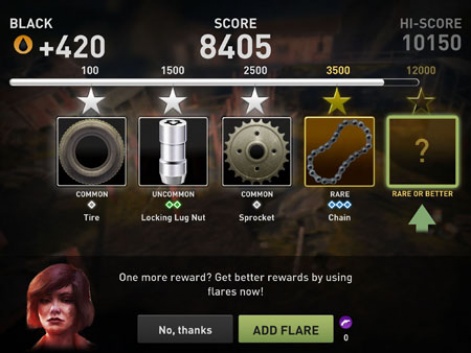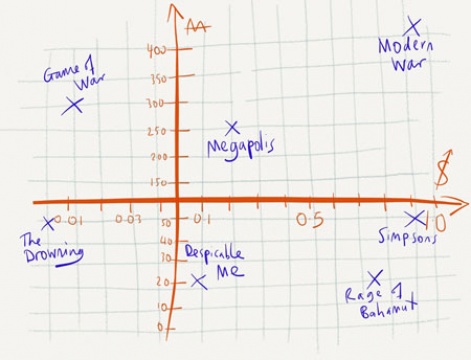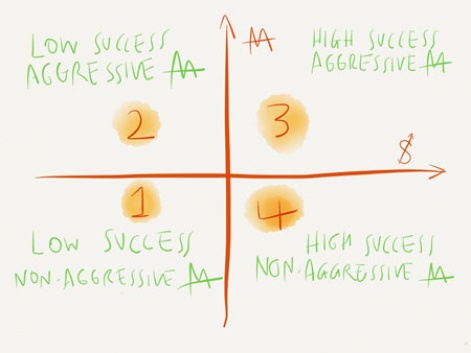Following on from my speech at the Develop in Brighton 2013 conference, we're now running a regular column called Monetizer.
You can see previous columns here, and we're also posting interesting screenshots highlighting different techniques over on our new Tumblr page.
As for Monetizer itself, it's an attempt to quantify the opening 10 minutes of significant free-to-play games to check out the early user experience and monetization techniques.
This week, we're checking out DeNA/Scattered Entertainment's much anticipated The Drowning.
Aiming for the head
The first thing to point out is that Monetizer isn't a review, nor is it an opinion piece.
The Drowning has been generating plenty of arguments (especially within Pocket Gamer), but those can be filed away for another day. As our introduction says, this column is 'an attempt to quantify the opening 10 minutes of significant free-to-play games'.
The first thing to note about The Drowning is its own introduction is very different to other games on DeNA's Mobage platform, and indeed to most other mobile games.
As you'd expect given its status as a high production value console-esque game, the introduction is very cinematic, with a movie-style voiceover and an opening non-interactive scene to set the atmosphere.
And unlike other Mobage games - which launch with a hard registration gate before you even get to see the game - with The Drowning you get to complete the tutorial, including using the innovative control system, before you get to see the game menu.
And even once you hit the main game menu, you can play as a guest, not signing into Mobage, although obviously your progress won't be saved.
Not hitting the wallet
In terms of monetization options, at least this early in the game, The Drowning is very light.
There's no push towards the virtual store, let alone a push towards spending real cash.
In terms of the mechanics of The Drowning's monetization, there's a single hard currency - Gold.
This is used to buy the four main in-game resources and items.
Black liquid is the basic soft currency used to upgrade your weapons and craft new weapons and vehicles. Gas is the game's fuel, which limits your movement.
Flares are a multipler to improve the rarity of the random items you find after completing each of the two-minute missions.

They can be thought of as the double currency power up first popularized in games like Halfbrick's Jetpack Joyride. However, unlike such permanent items, flares are a consumable.
The final item is poison, which is used to attract more powerful enemies, which if you can destroy them, drop more powerful items.
There are two sizes of poison - one and three units - with the three unit size acting as a three-fold damage multipler for your attacks on the enemies.
Light touch
As you can gather, The Drowning has a pretty sophisticated in-game currency system, although there are few hard gates, and there's no overt manipulation of the players in order to get them to spend.
For the record, having played the game heavily this week, I've so far spent $10 to buy flares to unlock more rare items.
As with all DeNA games, neither does The Drowning encourage you to make large transactions if you do want to buy in-game currency as there is very little discounting of virtual currency (comparing the minimum to the maximum transaction).
Indeed, as I pointed out last week on our Monetizer Tumblr, DeNA is the least generous company in this regard I've so far come across - with the exception of Amazon.
Far to go
But enough words. Let's try to pin down some numbers.
The first number we calculate in Monetizer is our Successful coefficient. This is calculated as the number of countries a game has been top 10 top grossing divided by the number of countries it's been top 100, all divided by the US top grossing position.
(Obviously this is a highly US-centric approach. You can read more detail about the approach - point 9.2 here.)
In the case of The Drowning, it's not been released for a long period of time, and hasn't yet been successful either.
On iPhone, the Success coefficient works out at = (2/14)/1236 = 0.001.
On iPad, it's = (1/18)/Not ranked = n/a
Typically, we don't rank any game as being successful unless it has a score of at least 0.05.
Final countdown
Another number we look for is the Monetization coefficient, which is a measure of how hard a game attempts to monetize its audience.
There are various components to this, such as the minimum and maximum transactions, how much currency confusion there is, and how quickly players are taken to the store. (See point 9.3.)
The Drowning scores 49, which is fairly low.
For example, Machine Zone's Game of War scored 299, while Funzio's Modern War scored 499. We regard any value above 100 as signifying a highly monetized game.
Finally, as previously mentioned, we also look at the Currency discount ratio, which for The Drowning is like another DeNA games at a mere 1.04.
Conclusions: The Drowning
Success coefficient (iPhone) = 0.001
Success coefficient (iPad) = n/a
Monetizer coefficient = 49
Currency discount = 1.04

Click here for a larger version
(Above you can see The Drowning plotted against various other games, although please note Monetizer remains a work-in-process.)
The Drowning sits in our '1' quadrant (low success, low monetization) of our graph.






















